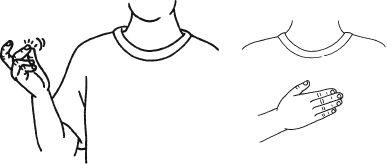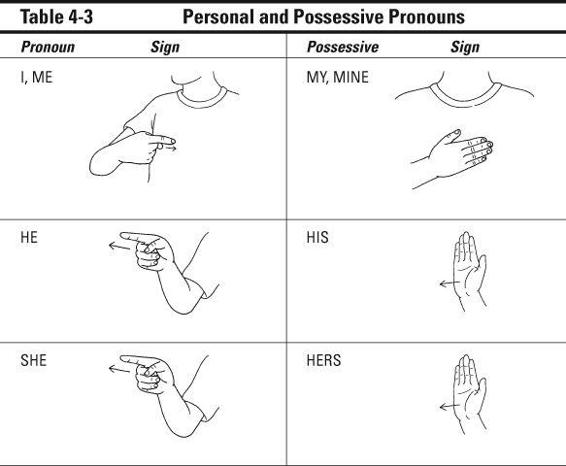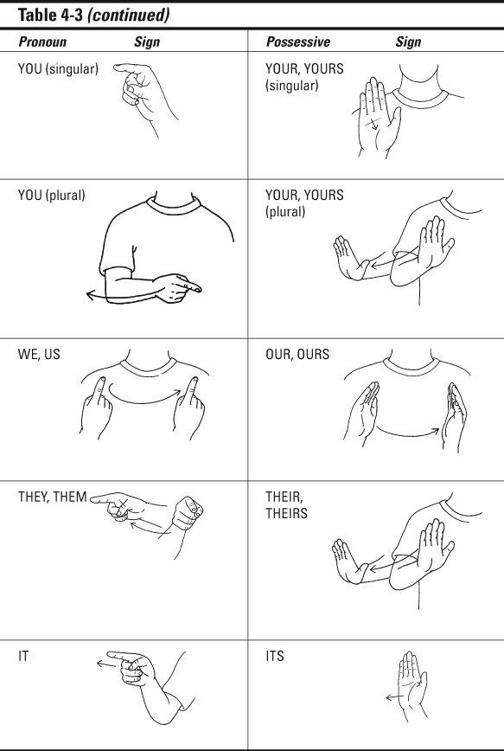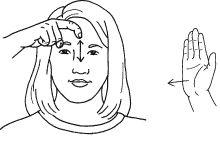Read Signing For Dummies Online
Authors: Adan R. Penilla,Angela Lee Taylor
Signing For Dummies (24 page)
Using Possessives and Pronouns
In the course of getting to know someone, especially when you’re both asking questions about each other, you’ll find that it’s probably easier to use pronouns. Using pronouns in Sign is the same as in English; you need to refer to a noun before you use a pronoun. Of course, if you’re using a pronoun to indicate someone or something nearby, you can point to that person or thing as you sign.
You may also use possessives during your conversation. Show possession by indicating whom you are talking about, what is being possessed, and then an open palm facing the person. You can also use proper nouns (a person’s name) to discuss possessives. Fingerspell the name of the person and then point to the item you’re talking about and sign a question mark. For example, suppose that you’re signing with someone and you want to know if the coat on the hook belongs to Tony. Fingerspell T-O-N-Y, point to the coat, and sign a question mark.
If you’re signing
with
Tony, point to the object or fingerspell it if it’s not in view, look at Tony, sign toward him with an open palm, and then make a question mark. You’ve now asked him “Is that yours?” Remember to keep your eyebrows up and wear an inquisitive look.
Table 4-3 gives a list of pronouns that refer to people, and it also gives you the Signs for the regular and the possessive pronouns. As you can see, some Signs are used for more than one pronoun. Simple sentences can follow English word order. Put the possessive pronoun Sign before or after the person or thing you’re signing; the order doesn’t matter. For example:
English:
My dog.
Sign:
DOG MINE or MY DOG
As a group, four little pronouns —
this, that, these,
and
those
— get a big name,
demonstrative pronouns.
But you don’t really need to know the name, just the Signs, which are in Table 4-4.
Sign the pronoun
that
by pointing to your subject with your dominant hand in the
Y
shape and bent at the wrist. Sign
this, these,
and
those
by pointing to the subject or subjects.
Sign singular possessives by holding your hand, palm outward, toward the person to whom you’re referring. Sign plural possessives the same way, but also move your hand from side to side in front of each person in a sort of sweeping motion.
The following sentences can give you some practice with pronouns and possessives:
English:
He is rich.
Sign:
RICH HIM
English:
He has money.
Sign:
MONEY HIS
English:
She is wise.
Sign:
WISE HER
English:
She has wisdom.
Sign:
WISDOM HERS
English:
They have gold.
Sign:
GOLD HAVE THEM









